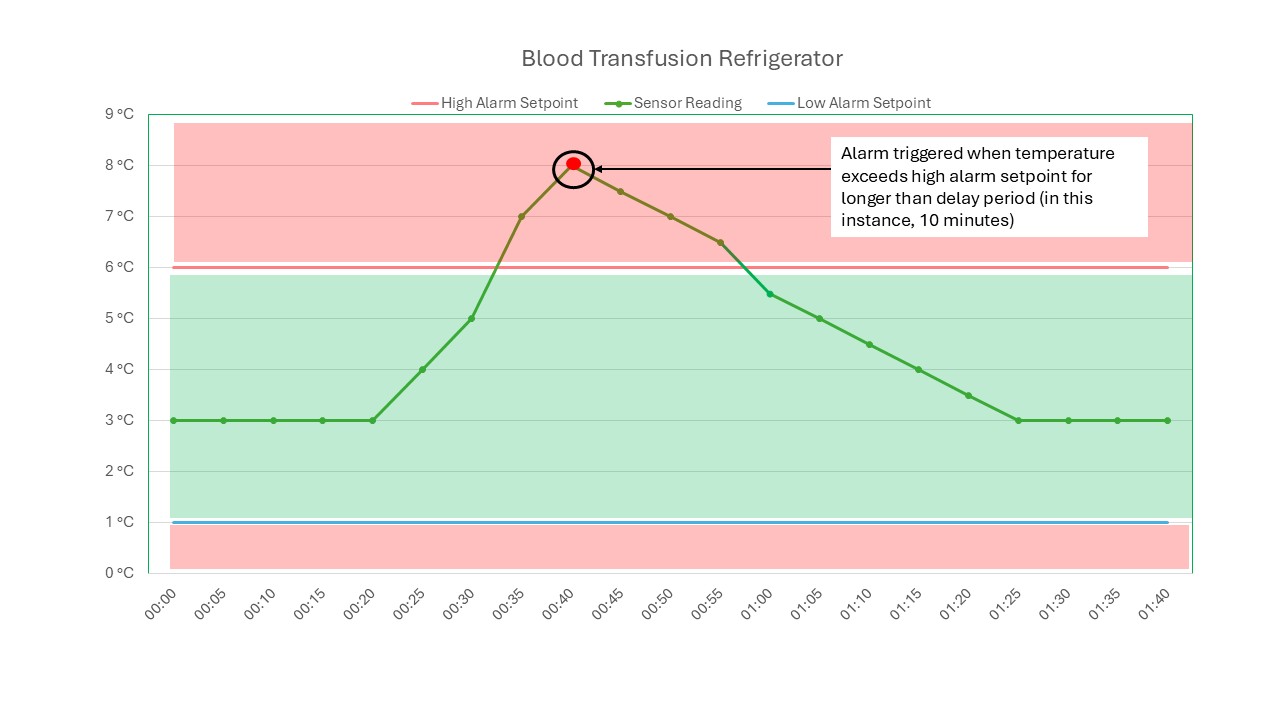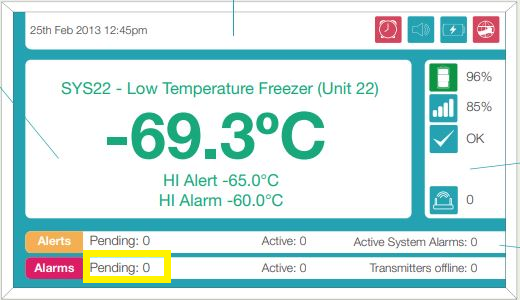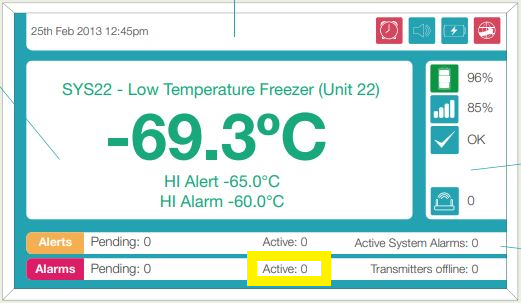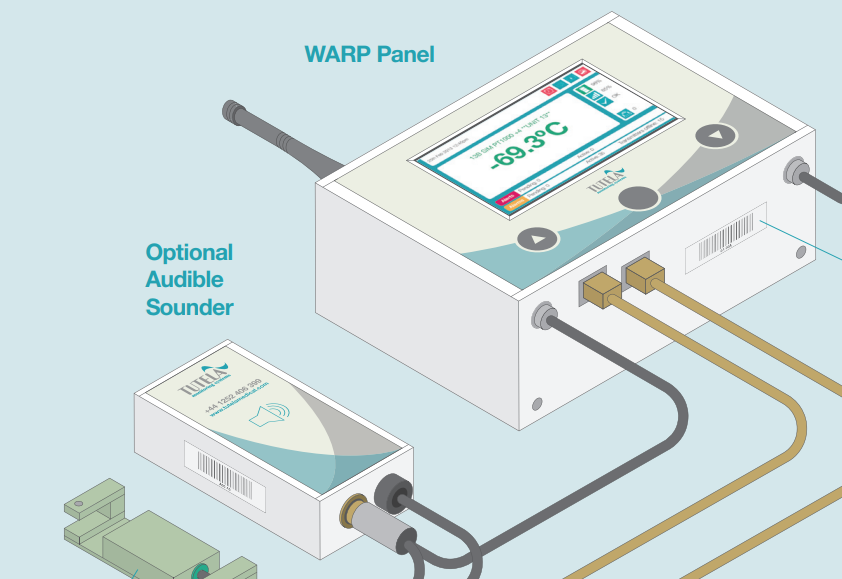Sensor Alarms
If a unit exceeds its high threshold/falls below its low threshold, the supplies inside may be at risk unless prompt action is taken.
If a sensor is in isolation when it goes out of range, an alarm will not be triggered.
If the sensor is still out of range after the isolation ends, an alarm will appear on the WARP display panel, but not on the CAM+ Website, nor will contacts be notified.
After you resolve the issue, it may take some time for the temperature, humidity, CO2, etc. to come back in range. Once it is back in range, it may take up to 5 minutes for the WARP to send data to the cloud and readings to update on the CAM+ Website.
Your account may be configured to trigger an alarm to inform you that the unit has come back in range. If so, the alarm will end with '(Cleared)’, for example, 'High Temperature Alarm (Cleared)'.
See Alarm Settings Report for instructions on how to view all alarm setpoints of all sensors in a department.
See Modify an Alarm Setpoint for instructions on how to edit a sensor's high/low alarm threshold and alarm delay period.
Types of Sensor Alarms
Alarm | Description |
|---|---|
High Temperature | A high temperature alarm is triggered if a sensor exceeds its high temperature threshold for longer than its alarm delay period. |
Low Temperature | A low temperature alarm is triggered if a sensor falls below its low temperature threshold for longer than its alarm delay period. |
High Humidity | A high humidity alarm is triggered if a sensor exceeds its high humidity threshold for longer than its alarm delay period. |
Low Humidity | A low humidity alarm is triggered if a sensor falls below its low humidity threshold for longer than its alarm delay period. |
High Pressure | A high pressure alarm is triggered if a sensor exceeds its high pressure threshold threshold for longer than its alarm delay period. |
Low Pressure | A low pressure alarm is triggered if a sensor falls below its low pressure threshold threshold for longer than its alarm delay period. |
High O2 | A high O2 alarm is triggered if a sensor exceeds its high O2 threshold for longer than its alarm delay period. |
Low O2 | A low O2 alarm is triggered if a sensor falls below its low O2 threshold for longer than its alarm delay period. |
High CO2 | A high CO2 alarm is triggered if a sensor exceeds its high CO2 threshold for longer than its alarm delay period. |
Low CO2 | A low CO2 alarm is triggered if a sensor falls below its low CO2 threshold for longer than its alarm delay period. |
High Liquid Level | A high liquid level alarm is triggered if a sensor detects that the contents of a liquid container has exceeded its high threshold for longer than its alarm delay period. |
Low Liquid Level | A low liquid level alarm is triggered if a sensor detects that the contents of a liquid container has fallen below its low threshold for longer than its alarm delay period. |
Tripped | A tripped alarm is triggered if a Dual Alarm/Status Contact Sensor is tripped. Depending on what the sensor is monitoring, this could indicate various events. For example, an alarm triggered by a sensor on a refrigerator door may indicate that the door has been left open. In other instances, a Dual Alarm/Status Contact Sensor may be connected to a non-Checkit sensor, such as a temperature or CO2 sensor built into the unit. In such cases, a tripped alarm may indicate that the sensor has exceeded/fallen below its high/low temperature or CO2 threshold. The sensor description (which appear in System field of the alarm notification) should help you determine what has caused the tripped alarm, for example, Blood Plasma Refrigeration Unit Door Sensor, Vaccine Refrigeration Unit Temperature Sensor, Cell Culture Refrigeration Unit CO2 Sensor, etc. |




